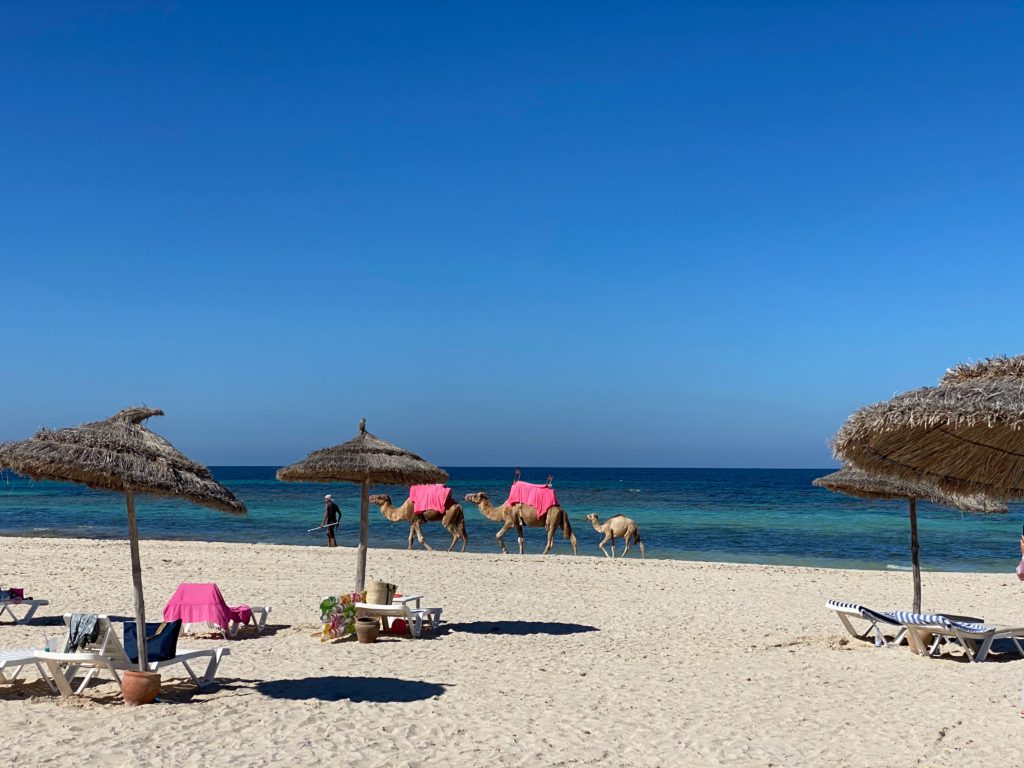The Mediterranean region is the world’s most popular tourist destination, yet it is also one of the regions most vulnerable to climate change globally.

In 2019, the Mediterranean region received over 400 million tourists, with a peak between June-September, during which 45 million national tourists and over 50 million international tourists visited. With its picturesque coastal landscapes, it’s no wonder that the majority of these visitors are concentrated along the Mediterranean coastline and islands.
Why is the Mediterranean such an attractive destination? Whilst the Mediterranean Sea’s crystal clear waters, sandy beaches, islands, iconic fishing villages, and sun are an obvious attraction, the Mediterranean region is also home to 212 of the 754 UNESCO World Heritage sites – 28% of the world total.
However, this idyllic destination comes with costs. According to a report by the Organization for Economic Co-operation and Development (OECD), tourism contributes up to 5.3% of global anthropogenic greenhouse gas emissions, with transport accounting for about 75% of this. For example, tourism accounts for 1% of global water usage. When compared to the agricultural sector – which is responsible for over 70% of water consumption – or industrial production – which is responsible for a further 19% – this amount may appear small. However, tourism’s use of water can become a threat to local residents, particularly when this resource is scarce, as it is the case in the Mediterranean.

There’s no doubt that the growth of tourism in the Mediterranean has contributed to the region’s economic development – in the past 20 years alone, tourism’s contribution to the region’s GDP has increased by 53%, according to the Mediterranean 2017 Quality Status Report. However, if this tourism is not sustainable, Mediterranean people, ecosystems, and even tourists may suffer the long-term effects.
What if your ideal holiday location weren’t so perfect anymore? Climate change is impacting numerous coastal attractions, and as these deteriorate, they may lose their touristic appeal. For example, polar ice melting is causing sea-level rise, which in turn impacts the region’s infrastructure, historical sites, natural ecosystems, and agricultural land, among others. For example, in 2018, Nature – the leading international scientific journal – published a report stating that of the 49 World Heritage sites located in low-lying coastal areas of the Mediterranean, 37 are “at risk from a 100-year flood and 42 from coastal erosion, already today”.
Will the number of tourists visiting Mediterranean countries remain the same if these World Heritage sites disappear? Would you travel to Tunis if you couldn’t visit the Archeological Site of Carthage or the famous Medina of Tunis? Or, would you visit Croatia without being able to walk around the ‘Pearl of the Adriatic’, i.e. Dubrovnik’s Old City? Not only would you be unable to visit the sites you’ve been waiting to see, but also that you won’t experience what you were expecting to if no adaptation measures are taken.
How can the tourism industry have a positive impact in the Mediterranean? In January 2022, the New York Times published a list of destinations to visit this year where tourists can be part of the solution to problems like over-tourism and climate change. Unusually, 10 out of the 52 spots are in the Mediterranean, and some of them are also listed in the World Heritage sites in low-lying coastal areas.

Moving from ‘Sea, Sand and Sun’ tourism to a more local and inclusive model could also be the starting point for more sustainable tourism. Promoting alternative destinations to replace the most visited coastal areas could mitigate the impacts on it. Often, most of the ‘coastal tourism euros’ in the Mediterranean stay within the gates of luxury enclaves or all-inclusive resorts, without reaching local residents. However, diversifying the places we visit will also allow others to benefit from it, and support a more equal reallocation of wealth.
Although travel to the Mediterranean has decreased since the outbreak of COVID-19, the desire to visit the region has not faded. Therefore, it is important to design a sustainable tourism model for the Mediterranean if we wish to continue visiting this magnificent and rich region, and enjoy its cultural and historical assets.